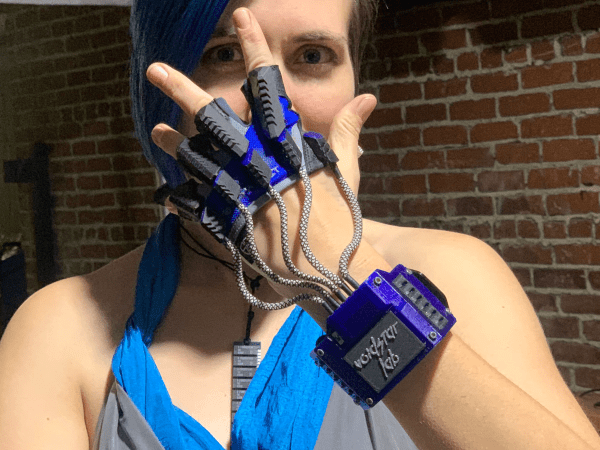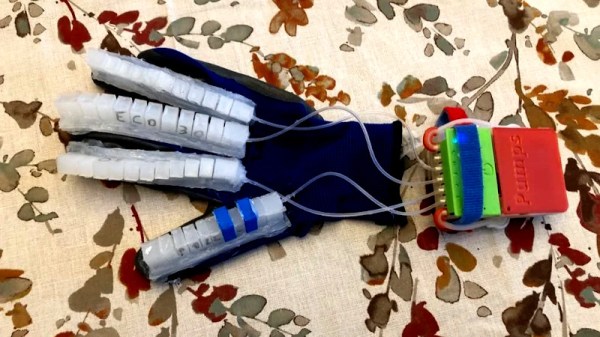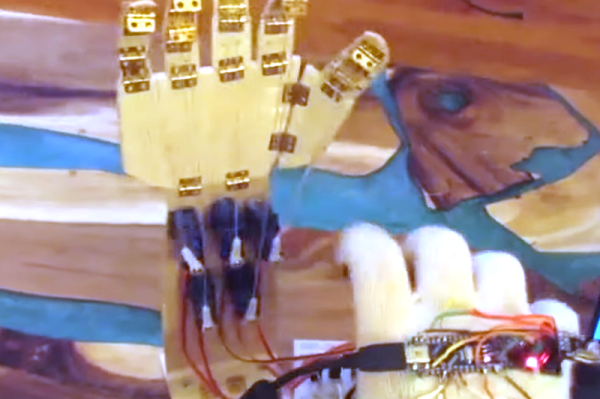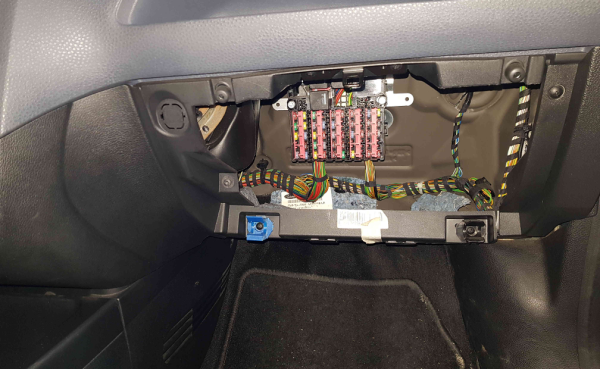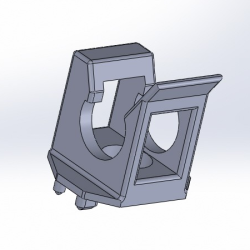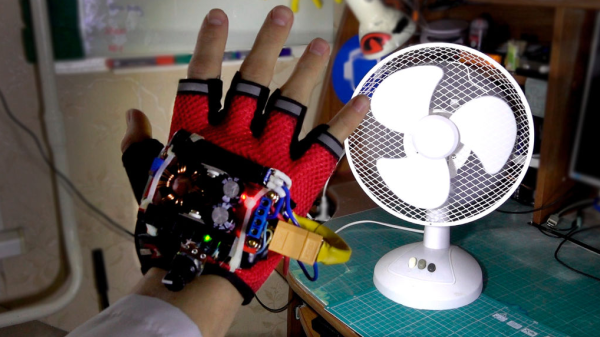If we really want wearable computing to take off as a concept, we’re going to need lightweight input devices that can do some heavy lifting. Sure, split ergo keyboards are awesome. But it seems silly to restrict the possibilities of cyberdecks by limiting the horizons to imitations of desk-bound computing concepts.
What we really need are things like [Zack Freedman]’s somatic data glove. This fantastically futuristic finger reader is inspired by DnD spells that have a somatic component to them — a precise hand gesture that must be executed perfectly while the spell is spoken, lest it be miscast. The idea is to convert hand gestures to keyboard presses and mouse clicks using a Teensy that’s housed in the wrist-mounted box. You are of course not limited to computing on the go, but who could resist walking around the danger zone with this on their wrist?
Each finger segment contains a magnet, and there’s a Hall effect sensor in each base knuckle to detect when gesture movement has displaced a magnet. There’s a 9-DoF IMU mounted in the thumb that will eventually allow letters to be typed by drawing them in the air. All of the finger and thumb components are housed in 3D-printed enclosures that are mounted on a cool-looking half glove designed for weightlifters. [Zack] is still working on gesture training, but has full instructions for building the glove up on Instructables.
It’s true: we do love split ergo keyboarded cyberdecks, and this one is out of this world.

